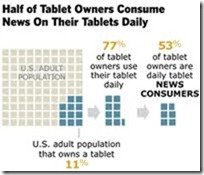 Steve Yegge, a senior engineer at Google, has accidentally and publicly posted a critical analysis about his company's understanding of platforms, calling Google Plus a "complete failure."
Steve Yegge, a senior engineer at Google, has accidentally and publicly posted a critical analysis about his company's understanding of platforms, calling Google Plus a "complete failure."
In a 4,000-plus-word deconstruction of Google+, intended for his co-workers' eyes only, Yegge critiqued his former employer Amazon before mentioning Google's failure to create a platform that works as well as Facebook.
The Google+ team tried to mimic Facebook's usage of games but simply ended up being run-of-the-mill, thanks to a lack of understanding of platforms, Yegge said.
"That one last thing that Google doesn't do well is platforms. We don't understand platforms. We don't 'get' platforms. Some of you do, but you are the minority. ... I was kind of hoping that competitive pressure from Microsoft and Amazon and more recently Facebook would make us wake up collectively and start doing universal services ... as our top priority from now on. But no. No, it's like our 10th or 11th priority. Or 15th, I don't know. It's pretty low."
Yegge intended only fellow Google employees to see his self-proclaimed "long, opinionated rant," which he deleted immediately after posting in his Google+ Circles Wednesday, though a copy remains on Rip Rowan's blog. Yegge said Google's public relations team was very respectful and did not try to censor his assessment, as it was his personal opinion.
He may well be right. Although Google enjoyed a 1,269 percent spike in traffic after opening to the public in late September, traffic has since dropped more than 60 percent, according to Chitika.
Could Google+ indeed be a complete failure? Here's five reasons why I have to agree with Yegge.
1. No one is there
Simply put, Facebook has more than 750 million active users, which is a monopoly compared with Google+ and its estimated 43 million. I can post the cure to cancer, but it would still go under the radar and unnoticed. If the purpose of social media is to be social, and there's no one to be social with, what's the point?
2. Too much buildup
Since Google+ didn't even open to the public until Sept. 20, it built up a hype that the newest social networking site was this amazing, exclusive new way to connect with friends. Everyone was begging to score an invite, to be a part of the elite. Until they found out that Google+ wasn't really that extraordinary.
3. There's nothing to do
Google undoubtedly has made attempts to keep users engaged with new updates and features, like Hangouts. But it looks like Google+ is having difficulty, judging by the numbers. However, if I wanted to video chat with my friends, I'd most likely use Skype. While I must admit I really enjoy the simple interface on Google+ sans a flood of invites to FarmVille and Mafia Wars, I know that many really enjoy the social aspect of online gaming. Google+ still has its fair share of games, but not nearly as many as Facebook.
4. No one has a clue how to use it ... still
Humans typically don't like change. I remember feeling the same way when I switched over from MySpace to Facebook. But Facebook made it easy to understand: There was nothing complicated about clicking "like" or add photo. I'll be honest, I still have no idea what happens after I click "+1."
5. Circles are about as private as the lunch arrangement in "Mean Girls"
Yes, you can actually see what circles people put others in. On each post from Google+ users, there is a denotation of what stream they post, either "limited" or "public." Chances are if you only see "public" posts from a friend, you have been placed in their acquaintances category, leaving you wondering why you weren't good enough to be a friend.
Story by Nadine DeNinno source: http://au.ibtimes.com
 Qantas is the talk of the town on social networking sites after CEO Alan Joyce took the unprecedented step of grounding the airline's domestic and international aircraft.
Qantas is the talk of the town on social networking sites after CEO Alan Joyce took the unprecedented step of grounding the airline's domestic and international aircraft.













